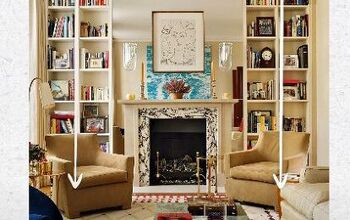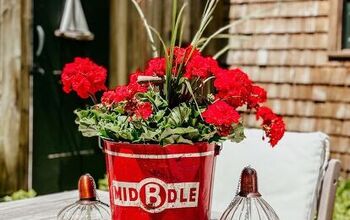Exploring Scandi and Japandi: A Guide to Warm, Minimalist Design Style

Are you a fan of Scandi design? What about Japandi? And what's the difference anyway? I like the simplicity and coziness of Scandi/Japandi interior design, but I couldn't tell you what separates them or unifies them.
So I was pleased to come across interior designer Rebecca Robeson's latest video in her design styles series. In this episode, she covers the two popular design styles, Scandi and Japandi, her experiences with Scandinavian design, and how it has evolved over the years:
Redesign Recommends!
Table of contents
What is Scandi design?
Scandinavian design, or "Scandi," became globally popular with the rise of Ikea. Originally, Scandinavian design was known for its modern, modular furniture, often featuring clean lines, geometric shapes, and a neutral palette.
Rebecca recalls the contemporary, somewhat cold feel of Scandinavian interiors in the past, marked by low-sitting leather furniture and creative, yet stark, design elements like interlocking coffee tables and snake-like bookshelves.
Scandi style has since transformed into something much warmer and cozier. This newer version of Scandinavian design emphasizes a light, neutral color palette, with touches of green from plants, some terracotta, and sparing black accents. The result is a clean, open, and cozy aesthetic, with every piece of furniture serving a functional purpose.
The emphasis on natural light, simplicity, and warmth differentiates Scandi from the more impersonal feel of traditional Scandinavian design.
What is Hygge?
Rebecca also introduces the concept of "Hygge," a Danish term meaning comfort, which plays a crucial role in making the Scandi style feel inviting and warm. Key elements of this style include clean-lined furniture, natural materials, and an overall sense of calm and relaxation.
The design often features hardwood floors, area rugs with woven textures, and minimalistic accessories. Light fixtures are also a standout feature, often simple yet creative, like upside-down baskets that emit a soft glow.
What is Japandi?
Japandi design is a blend of Japanese and Scandinavian design elements. Rebecca explains that Japandi combines the minimalist, orderly nature of both styles, but with a unique twist. While the Japanese design tends to be more traditional and formal, the Scandi influence adds a casual, cozy feel. The result is a harmonious, serene, and sophisticated aesthetic.
Japandi interiors often feature natural materials like bamboo, rattan, and warm-toned woods. The color palette can include darker, richer tones, such as cinnamon, rust, and deep green, alongside the neutral shades typical of Scandi design.
Rebecca highlights the importance of indoor-outdoor flow in Japandi spaces, where nature is seamlessly integrated into the home through elements like bamboo pieces, wood slatted walls, and minimal window treatments.
The softness of Scandi design blends with the more structured elements of Japanese design to create something truly unique. Accessories are kept minimal, with an emphasis on authenticity and natural beauty.
Scandi or Japandi?
Which do you prefer? Let us know in the comments below.





















Comments
Join the conversation